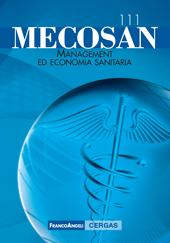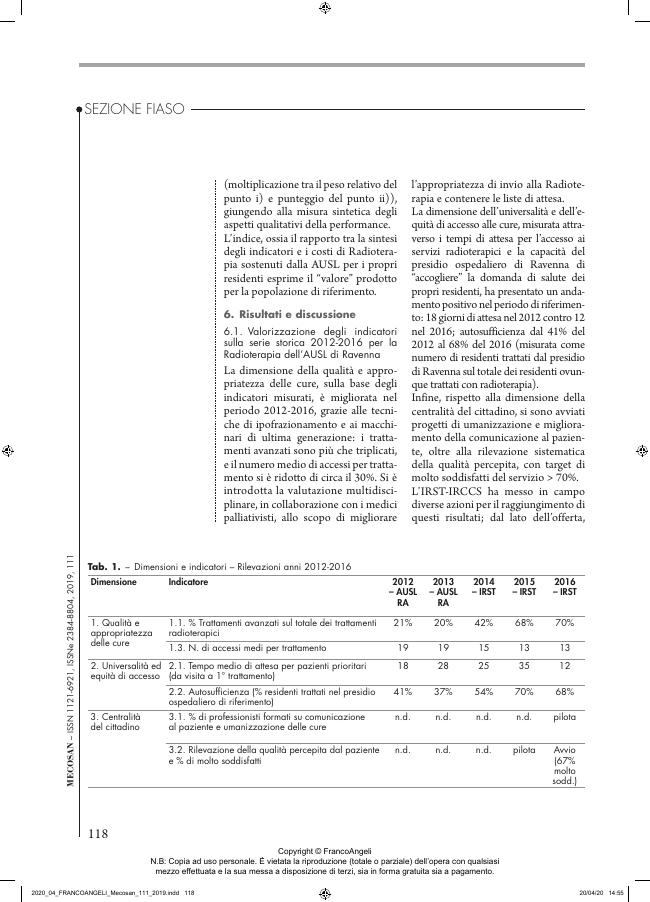Modelli virtuosi di collaborazione pubblico-privato : la presa in carico della radioterapia di una AUSL da parte di un IRCCS oncologico privato
113-123 p.
I sistemi sanitari regionali sono finanziati in gran parte con criterio pro capite, corretto dai costi e ricavi derivanti dalla mobilità dei residenti, spesso verso regioni o strutture più performanti. Laddove i servizi sono meno performanti, ovvero non vengono effettuati investimenti cruciali, si genera una duplicazione di costi per la Regione o per la AUSL di residenza: ai costi (in gran parte fissi) delle strutture pubbliche obsolete o poco performanti si aggiunge il costo dell'acquisto da terzi (mobilità passiva verso altri territori o verso il privato), senza parlare del disagio e dei costi sopportati dai pazienti per il trasferimento. Può così innescarsi un circuito vizioso, per il quale le opportunità di investimento vengono ulteriormente ridotte e - nonostante un finanziamento omogeneo pro capite - il gap tra territori rischia di allargarsi (vedi Nord-Sud Italia).
Larticolo mostra una possibile soluzione al problema, descrivendo la presa in carico da parte di un IRCCS pubblico-privato di un servizio AUSL di radioterapia in stato di obsolescenza tecnologica. Tale intervento esita in un risultato win-win sia per l'AUSL sia per l'IRCCS, ma soprattutto per i cittadini, che vedono incrementare sensibilmente il livello di assistenza erogato alla popolazione a parità o riduzione dei costi pro capite, ossia il "valore sanitario di popolazione" inteso come livello dei servizi per euro pro capite speso. [Testo dell'editore].
The health expenditure of the Italian regions is financed by a per-capita system, adjusted for costs and revenues induced by the mobility of patients towards more performing Regions or private institutions. In less efficient districts, this translates into cost duplications: in fact, the costs of public structures - which are mostly fixed costs - add up to the costs of purchasing services from third parties (i.e. passive mobility of patients to other regions or to private accredited structures). Moreover, patient mobility generates additional costs for patients, such as travel and accomodation. As a result, the investment opportunities in these districts are greatly reduced; thus, while benefiting from the same levels of per-capita funding, the performance gap between regions is gradually widening.
The article presents a Public-Private Parnership between a Cancer Research and Care Center and a Local Health Unit for the management of a radiotherapy service, describing its features and its performance measurement method. Results show that the PPP improved patient care while ensuring the sustainability of the regional health care system and the IRCCS involved. As result, total costs of the Romagna AUSL for radiotherapy showed a significant reduction, while the level of assistance provided improved by greatly increasing the "value" for citizens. The project represents the attainment of a win-win situation: the lower costs for passive mobility induced by the improvement of the service counterbalanced the investments and, at the same time, reduced the per-capita cost of the regional health system. [Publisher's text].
Fait partie de
Mecosan : management ed economia sanitaria : 111, 3, 2019-
Articles du même numéro (disponibles individuellement)
-
Informations
Code DOI : 10.3280/MESA2019-111006
ISSN: 2384-8804
KEYWORDS
- Collaborazione pubblico- privato, contenimento dei costi in sanità, valore per la popolazione, metodo per la misurazione della performance
- Public private partnership, cost management in health care systems, population-based value, performance measurement method



